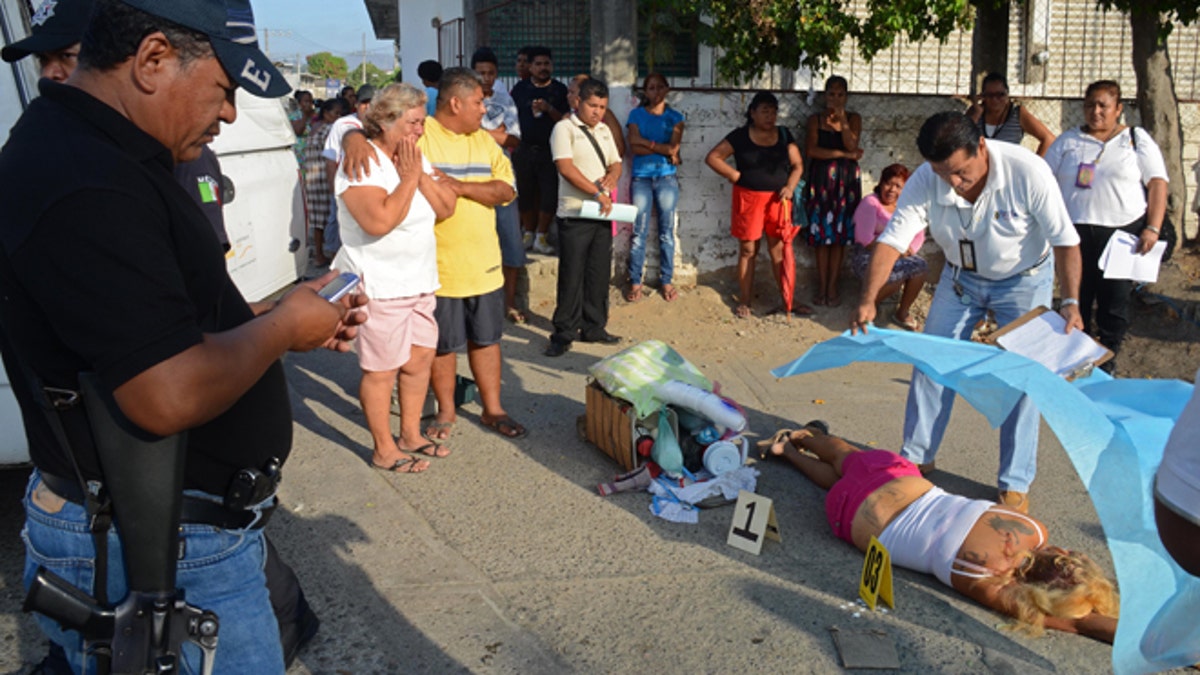
FILE - In this April 9, 2013 file photo, a forensic worker covers the body of a woman whose daughter was also killed after being shot dead by assailants while selling coffee on a street corner in Acapulco, Mexico. (AP Photo/Bernandino Hernandez, File)
The latest homicide statistics out of Mexico show a slight drop in murders overall, the first decrease in the country in six years.
But experts said Tuesday the drop was uneven, with some areas seeing major increases in violence.
Mexico's homicide rate dropped slightly to 22 per 100,000 people last year from 24 per 100,000 in 2011, according to new estimates by the country's National Statistics and Geography Institute.
For example, both the northern border state of Chihuahua and the southern Pacific coast state of Guerrero recorded 77 homicides per 100,000 inhabitants in 2012.
Yet Chihuahua, home to the violent border city of Ciudad Juarez, has seen the number of homicides fall from 6,407 in 2010, when it began a stepped-up policing effort, to 2,783 killings in 2012. Guerrero, home to the resort city of Acapulco, had homicides jump from 1,555 to 2,684 during those years.
Bloodshed also worsened in the border state of Coahuila, where homicides rose from 730 to 1,158. But Baja California, home to the once-violent border city of Tijuana, had homicides fall sharply, from 1,528 to 584.
The institute said in a statement late Monday that a total of 26,037 homicides were recorded last year across Mexico, a country whose population is now estimated at 117.3 million.
By comparison, Honduras had a 2011 homicide rate of 91.6 per 100,000. Brazil's 2011 figure was about 21.8, according to the United Nations.
Alejandro Hope, a former member of Mexico's domestic intelligence service, said the Mexican figures suggested that states which made real efforts to overhaul their police forces showed improvement.
"What this shows is that the ability of the state government in question counts, the level of their commitment counts," Hope said. "Wherever there has been a serious reform effort, for example in Chihuahua, there have been improvements."
Other characteristics, like territorial disputes between drug cartels, also play a role in where homicide rates rose or fell.
Homicides in Mexico appear to have peaked at 27,199 in 2011, and may continue dropping, Hope said.
"In a year from now, when the institute releases the figures, they will be around 23,000 or 24,000," Hope predicted.
Based on reporting by the Associated Press.
Follow us on twitter.com/foxnewslatino
Like us at facebook.com/foxnewslatino
